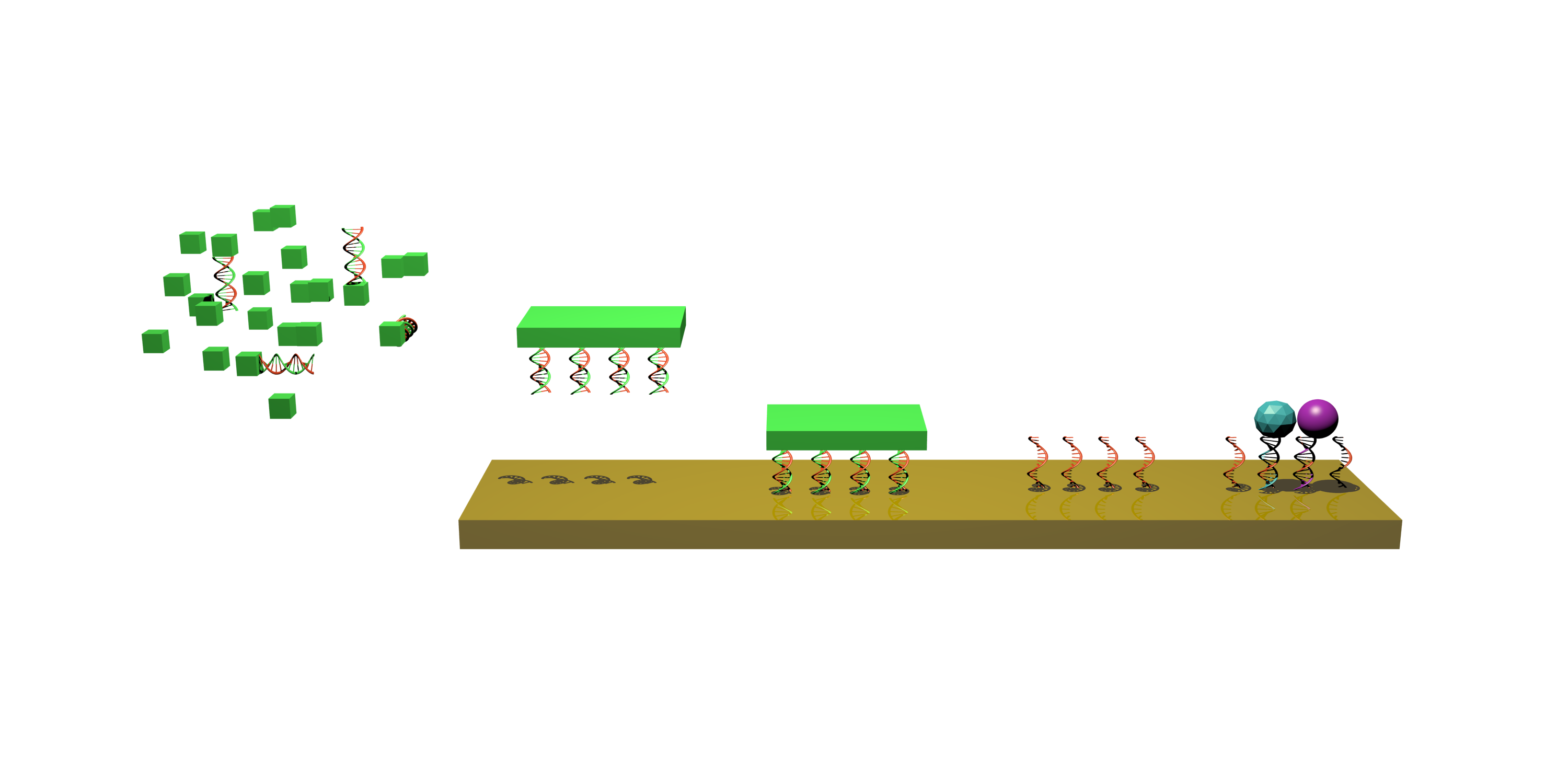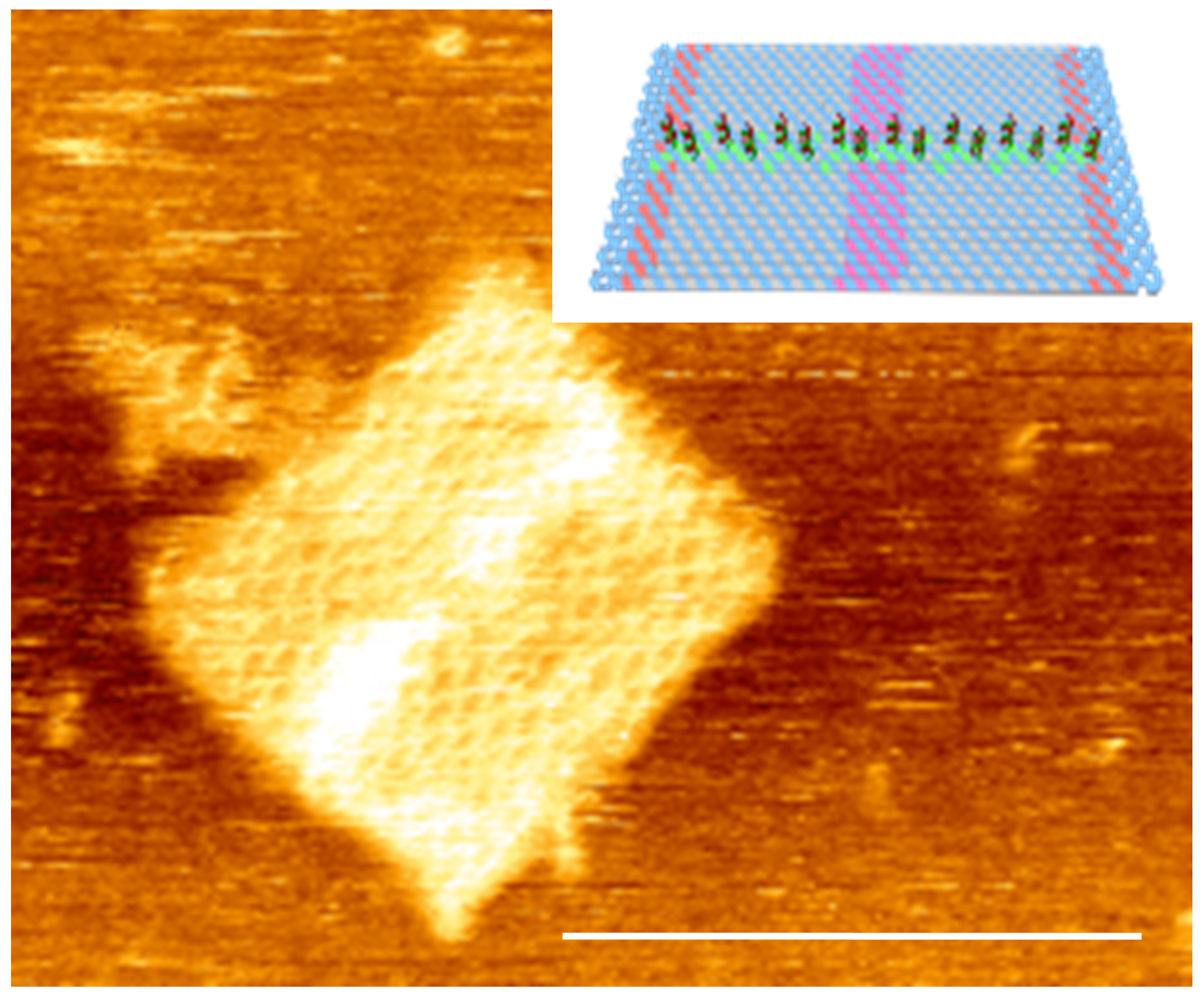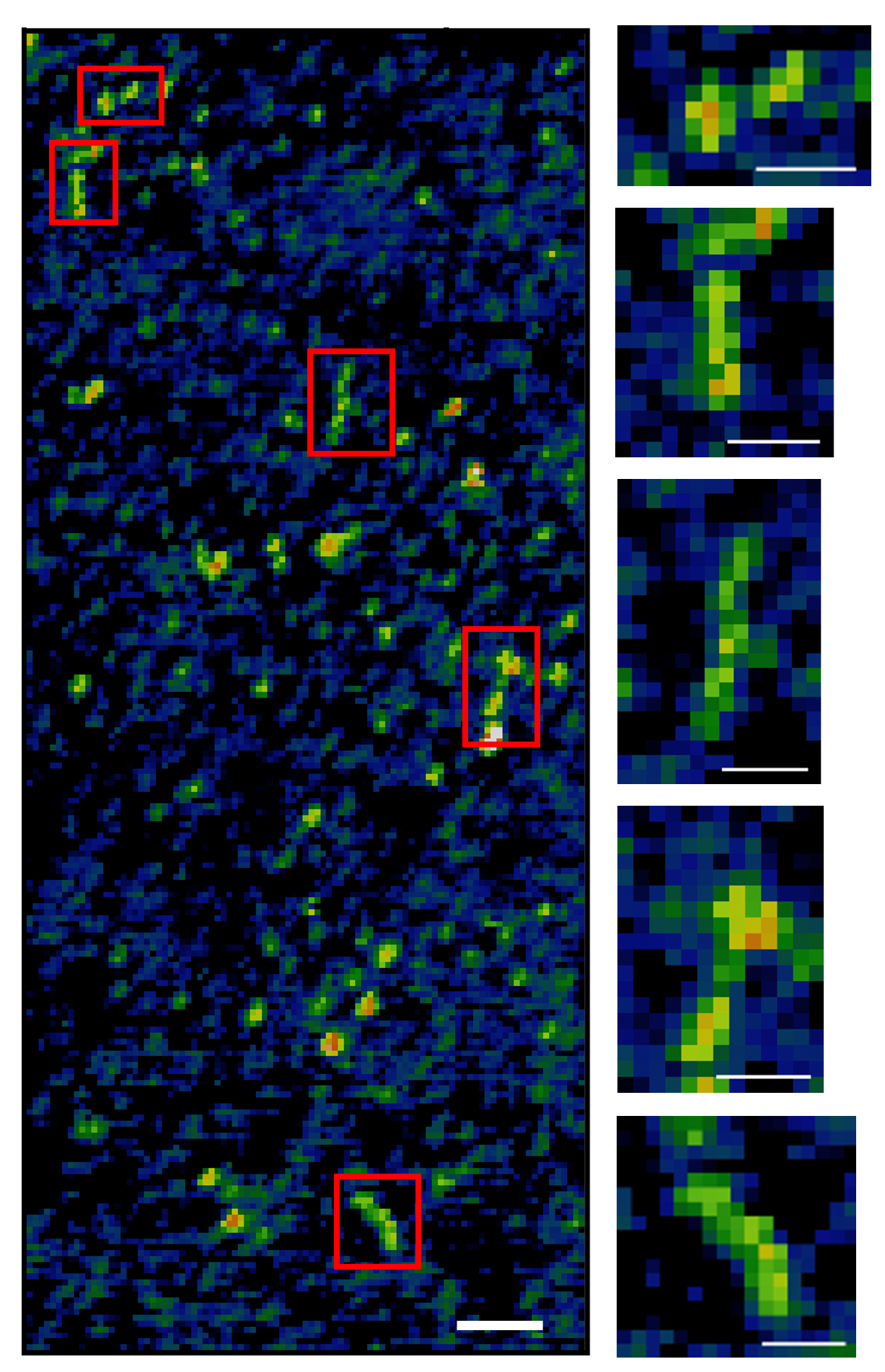Small, smaller, smallest – Leipzig researchers develop new process for surface nanostructuring
Whether in medical engineering, biotechnology or microelectronics, new approaches are needed in the trend towards miniaturization in order to fabricate even smaller, more sensitive and more precise forms and structures. Together with colleagues from the Leibniz Institute of Surface Modification, researchers at the Fraunhofer Institute for Cell Therapy and Immunology have managed to lower this limit even further. Using a new printing method, the scientists demonstrated that surface modifications with a resolution of less than 10nm are now also possible.
The Single Molecule Contact Printing method sees DNA molecules, rather than expensive and elaborate lithography processes, being used as a nanometer-scale stamps, similar to the typeset on the classic printing press. In order to produce these stamps, the scientists harness the natural molecular binding and self-assembly properties of the DNA in order to arrange specific patterns.
By using the printing method, these molecular patterns are then able to be transferred to different materials. The process was first demonstrated on gold surfaces. Beyond this, it could be shown that even functional coatings, created by first depositing a monolayer of small molecules on the surface, are able to be imprinted. This research paves the way to structuring further materials such as ceramics, silicates, metals and plastics at the nano scale. Moreover, the process has also been used to arrange nanoparticles and biomolecules such as DNA and proteins into complex patterns.
The scientists envisage applications above all in the field of life sciences, where the demand for precise arrangements of individual or a small number of molecules in order to analyze and detect biomolecules is constantly on the rise. Fields of application present themselves here in various areas of biomedicine, medical engineering, biotechnology and even in microelectronics.

Contact
Dr. David M. Smith
Head of DNA Nanodevices Unit
Phone +49 341 35536-9311
david.smith@izi.fraunhofer.de

